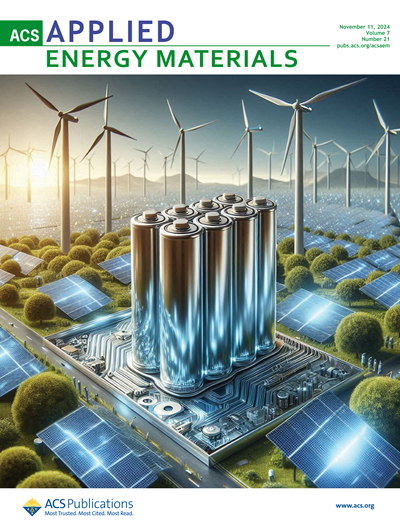利用嗜酸性嗜铁和嗜硫中层菌对印刷电路板中的金属进行两步生物分解
IF 5.5
3区 材料科学
Q2 CHEMISTRY, PHYSICAL
引用次数: 0
摘要
迄今为止,由于技术进步和第四次工业革命的到来,电子废物(e-waste)已成为全球增长最快的废物流。虽然电子垃圾对环境造成危害,但这些材料被认为是金属的良好二次来源。本研究考察了印刷电路板中金属的生物沥滤,在不同电子废物颗粒大小的情况下,使用铁硫氧化微生物进行两步生物沥滤。不同粒度(PSs)的金属分析表明,铜(Cu)、锡(Sn)和铅(Pb)主要沉积在较粗的部分,粒度从 500 微米到 710 微米不等,重量百分比分别为 28.7%、20.5% 和 11.1%。另一方面,铁 (Fe)、锌 (Zn)、锰 (Mn)、镍 (Ni) 和铝 (Al) 等金属主要沉积在较细的部分,从 38 微米到 150 微米不等,重量百分比分别为 37.3%、5.9%、8.8%、1.3% 和 4.2%。生物浸出过程结束后,观察到在 38 至 150 微米的 PS 中金属提取率较高,在 10 天内,Al、Cu、Fe、Mn、Ni、Pb、Sn 和 Zn 的回收率分别为 62.9%、68.2%、95.3%、86.1%、61.9%、47.2%、21.2% 和 63.6%。本文章由计算机程序翻译,如有差异,请以英文原文为准。
Two-Step Bio-Dissolution of Metals from Printed Circuit Boards Using Acidophilic Iron- and Sulfur-Oxidizing Mesophiles
To date, electronic waste (e-waste) is the fastest-growing waste stream worldwide due to technological advancement and the advent of the Fourth Industrial Revolution. Although e-waste is an environmental hazard, these materials are considered good secondary sources of metals. This study examined the bioleaching of metals from printed circuit boards, where a two-step bioleaching approach was used with iron–sulfur-oxidizing microorganisms at different e-waste particle sizes. The metal analysis from the different particle sizes (PSs) showed that copper (Cu), tin (Sn), and lead (Pb) were predominantly deposited in the coarser fraction, ranging from 500 to 710 µm at 28.7, 20.5, and 11.1 wt.%, respectively. On the other hand, metals such as iron (Fe), zinc (Zn), manganese (Mn), nickel (Ni), and aluminum (Al) were mostly deposited in the finer fraction, which ranged from 38 to 150 µm at 37.3, 5.9, 8.8, 1.3, and 4.2 wt.%, respectively. After the bioleaching process, it was observed that higher metal extraction occurred at a PS ranging from 38 to 150 µm, which achieved recovery efficiency rates of 62.9%, 68.2%, 95.3%, 86.1%, 61.9%, 47.2%, 21.2%, and 63.6% for Al, Cu, Fe, Mn, Ni, Pb, Sn, and Zn, respectively, over 10 days.
求助全文
通过发布文献求助,成功后即可免费获取论文全文。
去求助
来源期刊

ACS Applied Energy Materials
Materials Science-Materials Chemistry
CiteScore
10.30
自引率
6.20%
发文量
1368
期刊介绍:
ACS Applied Energy Materials is an interdisciplinary journal publishing original research covering all aspects of materials, engineering, chemistry, physics and biology relevant to energy conversion and storage. The journal is devoted to reports of new and original experimental and theoretical research of an applied nature that integrate knowledge in the areas of materials, engineering, physics, bioscience, and chemistry into important energy applications.
 求助内容:
求助内容: 应助结果提醒方式:
应助结果提醒方式:


